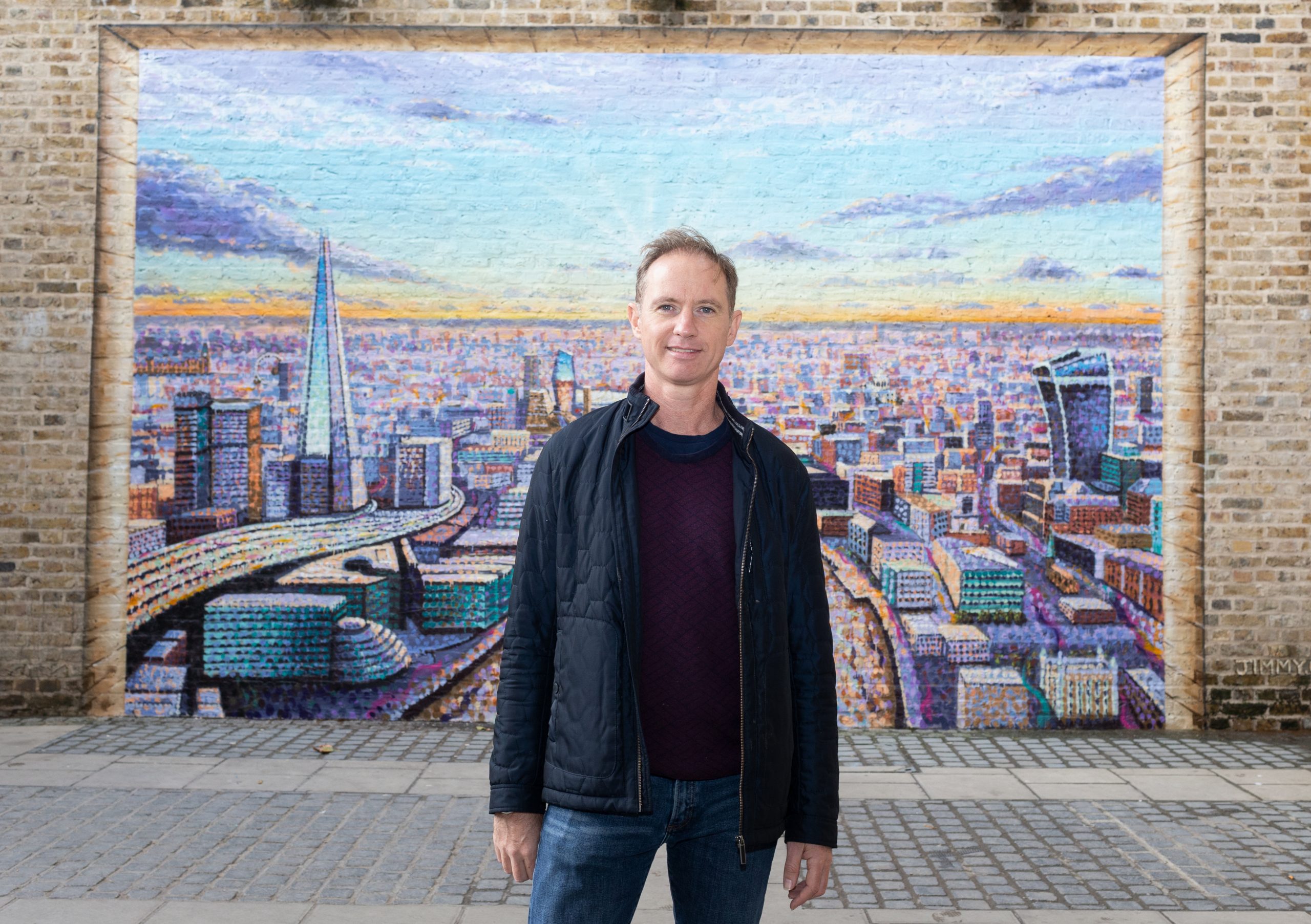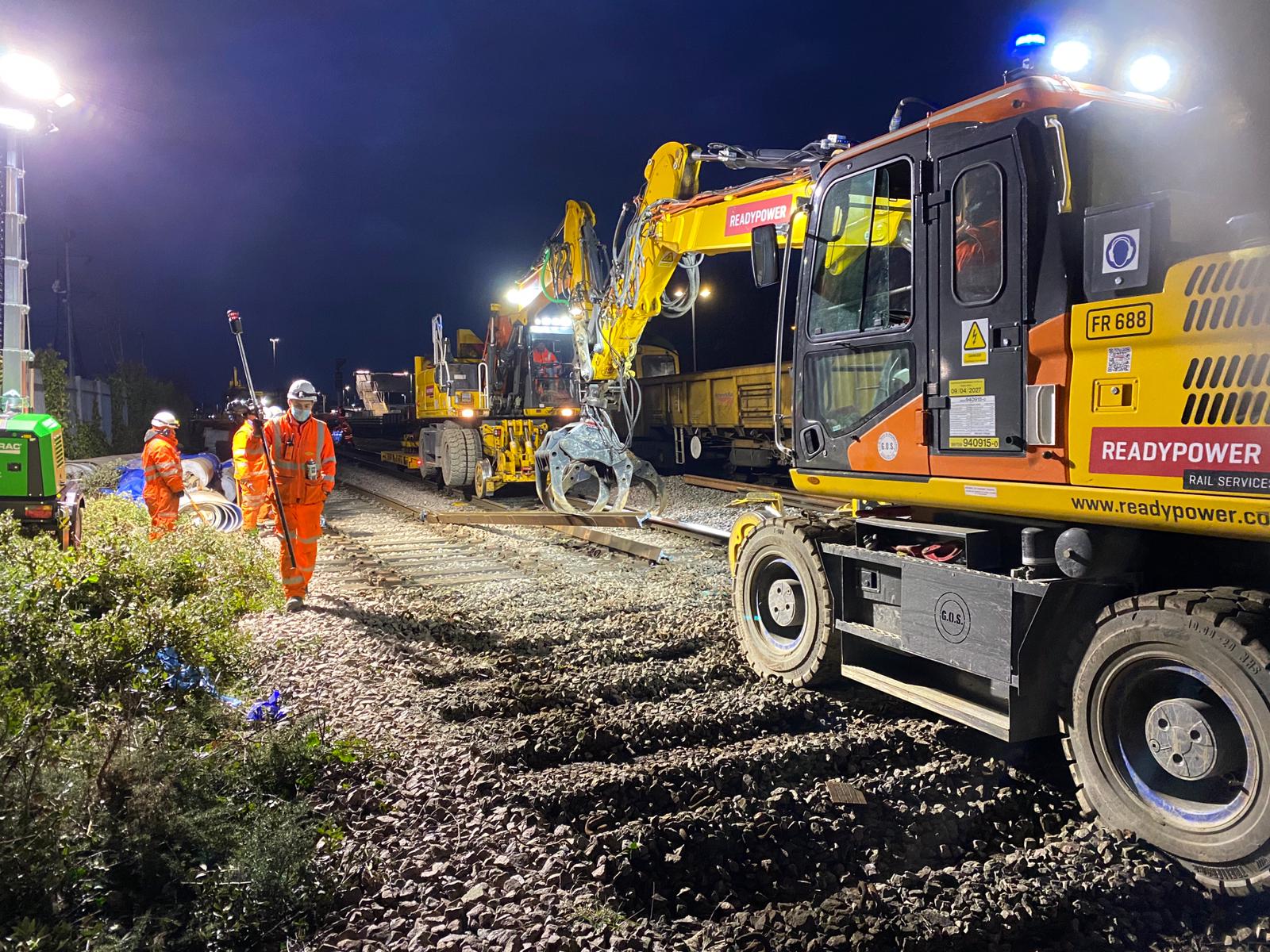Our railway is rich in striking artwork, transforming bridges, walls and hoardings across Britain.
We take a look at some of the pieces making an impact:
A window to the London skyline.
Street artist Jimmy C has turned a wall near London Blackfriars station into a window to the London skyline. It’s one of most detailed works and took many months of preparation.
He said: “For me this is perhaps the ultimate wall I’ve painted in the 10 years I’ve been in London. It’s not just a significant location but this is my way of paying tribute to the city I love. I knew I wanted to paint a city scape, inspired by a painting I saw of London in the 1940s by an artist called David Bomberg.
“It was a painting of St Paul’s after the Blitz and I thought, wow, here’s an artist depicting contemporary London as it was and I wondered who else was painting contemporary images of London today.”
“I wanted to capture the energy and movement of London as well as making sure the architectural icons are there – those buildings we see as we navigate the city and we all recognise. I even used satellite imagery to get the buildings in the right places – I know what Londoners are like and they recognise the streets and the places they work. I hope by the way I’ve created the rhythms and movements, I’ve evoked the way people navigate the city and relate to it.”He said:
London Bridge tribute
In February 2018, Jimmy C produced a major work of art in memory of the London Bridge terror attacks.
The work shows a series of hearts floating in space and is painted under one of Network Rail’s arches on Stoney Street, in Southwark. The attacks, on June 3, 2017, took place in the surrounding area.
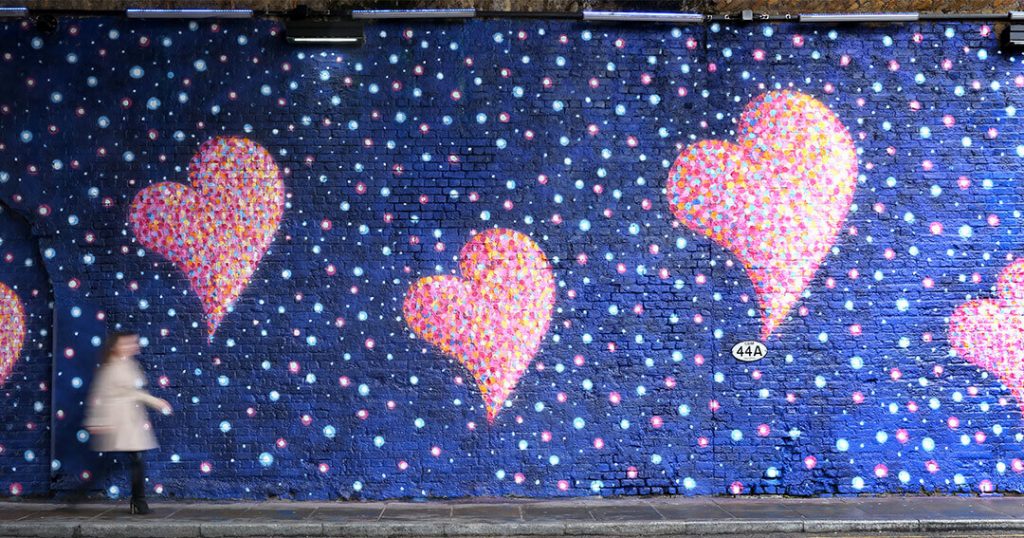
Jimmy said: “London is a great city, a city of the world, with people from all cultures living and working here. The terror attacks shocked everyone who loves our city. It is a great honour to be able to create a lasting image to the memory of those who lost their lives and to the resilience and spirit of London.”
Network Rail had previously worked with Jimmy C on a Shakespeare portrait on Clink Street, Southwark. In 2016, to mark the 400th anniversary of Shakespeare’s death, Jimmy sprayed a colourful image of the playwright just round the corner from Shakespeare’s Globe theatre.
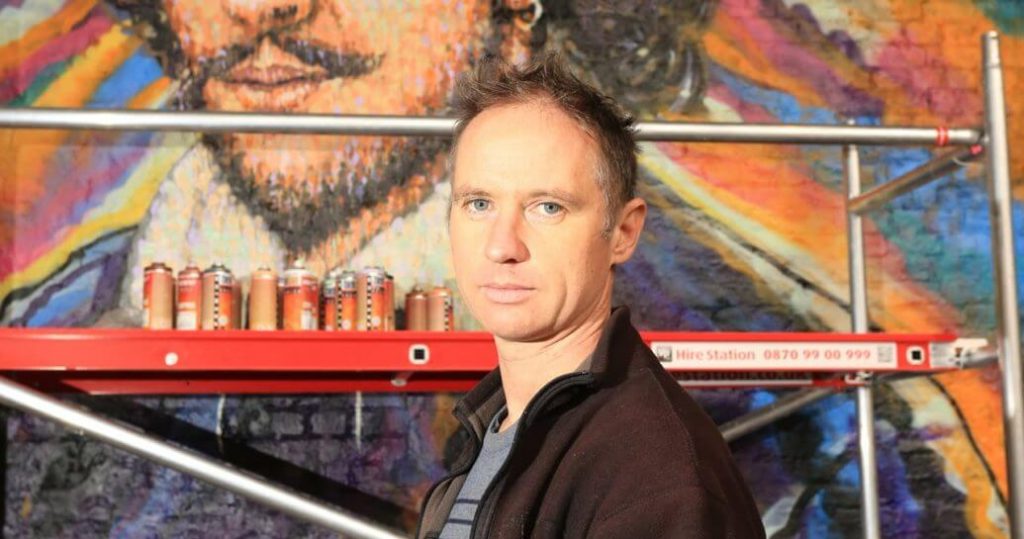
Vintage railway-style signs
Network Rail teamed up with renowned sign writer Lionel Stanhope, who has painted sets for Hollywood productions and Disneyland, to paint murals on the railway across the capital. The project hoped to inspire pride in neighbourhoods and encourage respect for our bridges and other structures.
He said: “I trained as a sign writer so lettering is my thing and I paint scenery for films. So I love working on anything big and these signs are 50 feet wide by 12 feet deep.
“I really enjoy doing these signs for Network Rail because I like to work on big pieces, plus it’s cool to get so much positive feedback from people, especially in Brockley where I’ve lived for 15 years.”
The pieces first graced a wall in Herne Hill after the community launched a successful crowdfunding campaign for artwork, which they hoped would help rejuvenate the area.
Other community groups crowd-funded for similar work with two signs in Hither Green, two more in Catford, one in Lionel’s native Brockley and Forest Hill.
Lionel has also painted murals at Lee, Nunhead, West Norwood, Brixton, Clapham and Selhurst, where residents also joined forces recently to create their own mural.
Lionel, who works at Elstree Studios painting scenes for film and television, said: “Some of these railway bridges are on the South Circular, so all the heavy traffic has made them quite grim to look at.
“So these murals really help brighten the place up. I design the signs, all in the same typography but with two or three colours to choose from, then the community usually create an online poll to vote for their favourite.”
Lionel said: “I’ve also personalised some of the signs based on suggestions from local people, so I painted a walrus in Forest Hill because they have had one on display in their local museum for over a century, and I added a heron in Lee because they’ve got herons in the park.”
Glasgow Queen Street
In 2018, Glasgow-based artist Gabriella Marcella unveiled a huge piece at Scotland’s third busiest station as part of a £120m redevelopment of Glasgow Queen Street.
With just two years of construction to go, Gabriella, a graduate of Glasgow School of Art, created a piece inspired by the city.
The installation on hoardings at the station came ahead of a major milestone for the project – part of the Edinburgh Glasgow Improvement Programme (EGIP), a Scottish Government-investment in the railway infrastructure across central Scotland.
The demolition of Consort House tower and the Millennium Hotel extension cleared the way for the final phase of demolition on Dundas Street to get underway. Piling work to underpin the future expanded station concourse could begin.
Facing onto Glasgow’s main civic square, the hoarding artwork also provided a striking backdrop for the European Championships in Glasgow. George Square would host a Games Village, while elite international cyclists would race past Glasgow Queen Street during the cycling events.
Gabriella said: “I was asked to produce a bold design which was modular, adaptable and unique to the setting. The artwork includes motifs inspired by the Glasgow coat of arms and the legend of St Mungo as well as old railway semaphore signals and other more abstract imagery.”
Ancient clay transformed
In January 2017, artist Alison Cooke used ancient clay found beneath London Bridge station to create art inspired by the rail network.
Network Rail found a third of a tonne of clay, thought to be 54 million years old, during redevelopment.
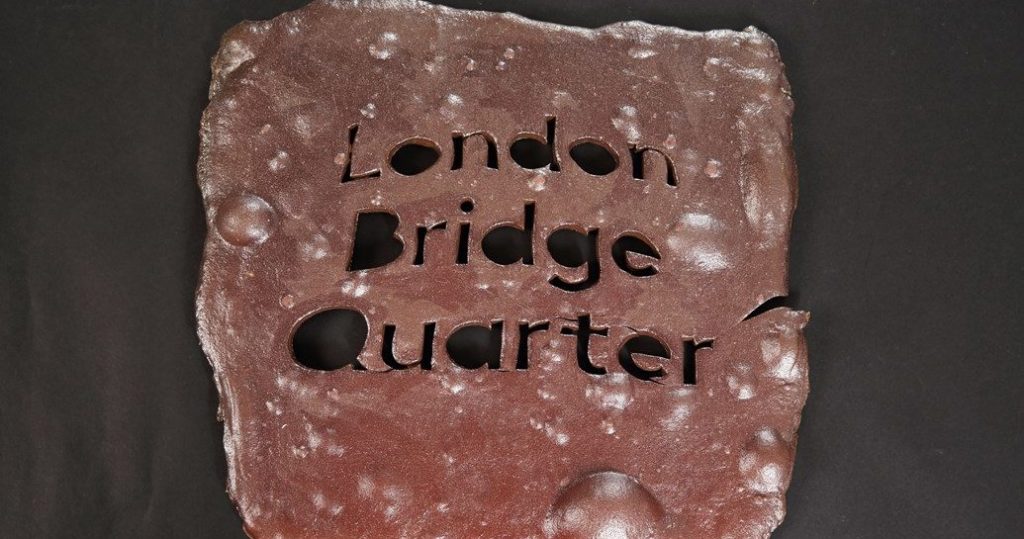
Inspired by the sight of a piling machine digging deep into the foundations of London Bridge, Alison asked for a batch of the raw material. Happy to oblige, Network Rail provided a tour of the station construction site and access to the many historical artefacts that had been found during the station’s £1bn works.
The Southwark-based artist shared the clay with seven fellow members of the Associated Clay Workers’ Union (ACWU) to create pieces of contemporary art that reference the railway and the history of London Bridge.
